Chapter 6: Waves and Sound
Transverse and Longitudinal Waves
{{Transverse Waves{{
- Has peaks (crest) and troughs
- Vibrations are at right angles to the direction of travel
{{Longitudinal Waves{{
Consists of compressions (particles pushed together) and rarefactions (particles moved apart)
Vibrations are in the same direction as the direction of travel
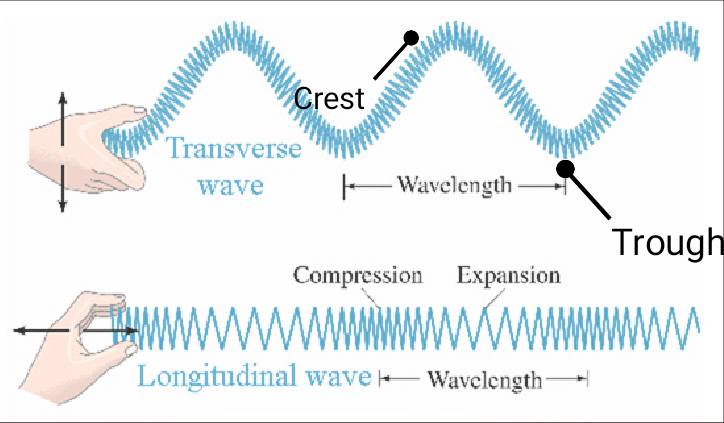
Describing Waves
- ==Speed== ==measured in meters/second (m/s)==
- ==Frequency== ==is the number of waves passing or forming per second. Its SI unit is== ==Hertz(Hz)==
- ==Wavelength== ==is the distance between any point on a wave and the equivalent point next to it.==
- ==Amplitude== ==is the maximum distance a point moves from its rest position when a wave passes.==
The Wave Equation

Wave Effects
Reflection
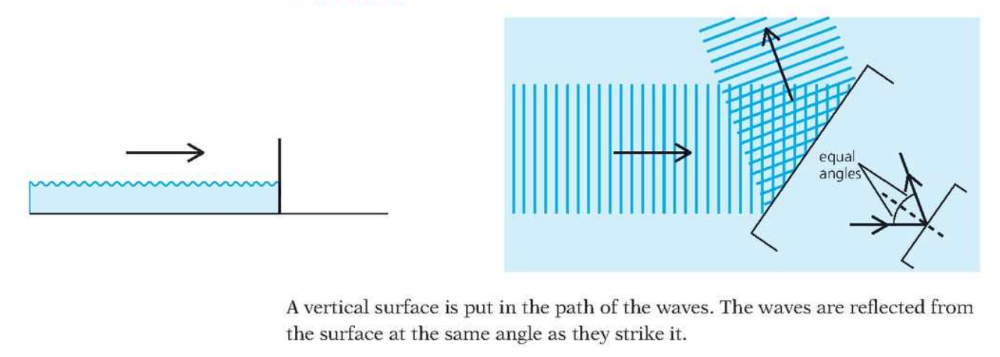
Refraction
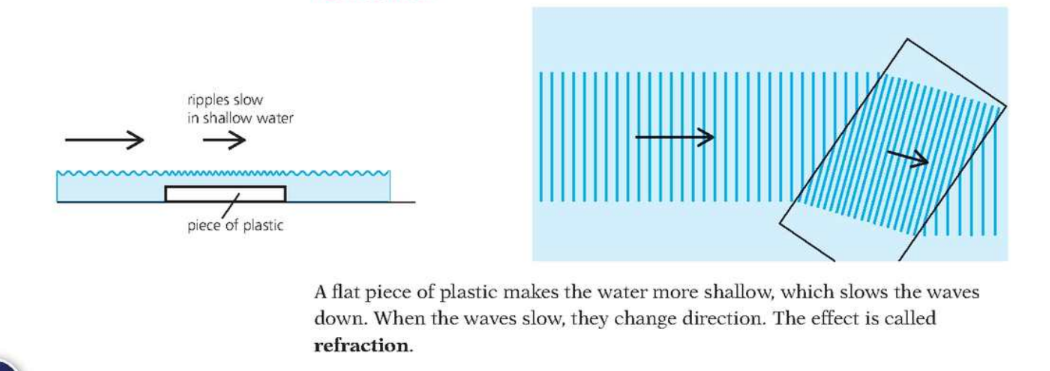
It can be explained as:
%%The waves keep oscillating up and down at the same rate (frequency), so when they slow, the wave fronts close up on each other. That follows from the wave equation on the right. As the frequency is unchanged, a decrease in speed must cause a decrease in wavelength.%%
Diffraction
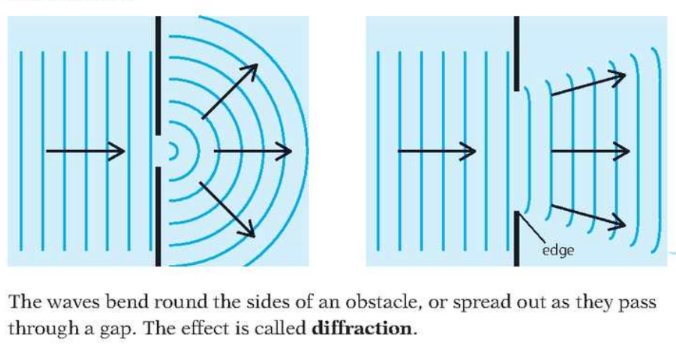
Sound Waves
- ==Are caused by vibrations.==
- Are longitudinal.
- They need a material/medium to travel.
- They can travel through solid, liquids and gases but not vacuum.
- They can be reflected, refracted and diffracted.
Speed of Sound
- Is about 330m/s in air.
- %%Speed depends on temperature of the medium.%%
- %%Speed does not depend on pressure of air.%%
- %%Speed is different through different mediums.%%
Measuring speed of sound

Echoes
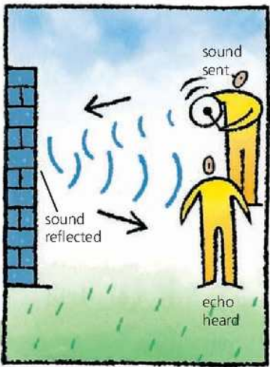

- Common uses of echo:
- Parking Sensors
- Radar
Ultrasound and Infrasound
- Human audible frequency - 20Hz to 20kHz.
- Frequency above human range is %%ultrasound.%%
- Frequency below human range is %%infrasound.%%
- Common uses of ultrasound:
- Pre-natal scanning
- Cleaning and breaking
- Echo-sounding
- Metal testing